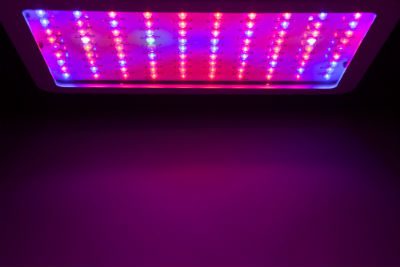
The LED grow light industry has really boomed in the last decade or so, with the market being flooded with all different types and sizes of LED grow lights. On the one hand, it is great that there is so much choice for modern marijuana growers. However, it also makes it more difficult to make a decision. With so many options, we can get lost in the decision making process. In this article we will give you a helping hand in figuring out which LED grow light would best suit your specific grower needs.
Power
The first step in figuring out which LED grow light you need is figuring out how powerful it needs to be. If you are growing a flowering plant like cannabis, then you will need a strong light. If you are growing lettuce or herbs, the light won’t need to be as powerful.
Then you need to measure your grow space. “You will need a light powerful enough to cover the entirety of your grow area, so that all your plants can flourish. For growing cannabis, you will need between 30 and 40 watts of power per square foot of grow space. So, say you have a grow space of 16 square feet. A good light for that would be a 600W LED light.”says Nathan Jackson,an expert grower from Vela Community.
It is important to note that we are talking about the power that the light gives out, not the power input. LED bulbs are never run at full power, because this would drastically decrease the longevity of the light. For example, a 3-watt chip will only run at about 60% of full power. This means that a 600W LED light will actually draw between 800W and 1000W of power.
Spectrum
The best all-round LED grow lights are full spectrum. However, if you are just looking for a supplementary light, then a specific light wavelength (such as red for flowering) might be all that you need. In most cases though, full spectrum lights are the way to go.
There are two types of full spectrum: white LEDs and multi-band LEDs. All-white LEDs claim to be the most like natural sunlight, but they are also known to produce more green and yellow light than necessary. Multi-band LEDs emit more of the light wavelengths that plants actually need to grow, like red and blue light, and less of the wavelengths that plants don’t need so much, like yellow and green light. This makes multi-band LEDs more efficient.
PAR
PAR, or Photosynthetically Active Radiation, is the value given to light that can be used by plants to grow (as opposed to lumen, which just refers to the light visible to humans). Some LED grow light manufacturers will provide the PAR value for their lights, but be careful. They might only provide one value for the space directly below the light. The PAR value decreases the further away from the centre you get. This means that plants on the edge of your grow area will get less light, so just be aware of this.
There are some grow light manufacturers that will provide PAR values not just for the centre, but for the entire coverage as well. You can also find some grow lights with lenses that help diffuse the light more evenly.
Summing Up
The main things to do before buying an LED grow light are: measure your grow area so you know the coverage you will need, and work out the power your light will need to provide you with. Then you will need to decide on the spectrum (if you are unsure, you can’t go wrong with a full spectrum multi-band LED light). The price of the light will vary depending on quality, size and added extras, but how much you are willing to spend on a grow light is ultimately up to you.
Finally, don’t forget to check for warranties and money back guarantees. Usually, the longer the warranty, the higher the quality of the light. Good luck with your purchase, and happy growing!
Robert Smith is an irreverent gardener and indoor grow expert. He is on a mission to stamp out gobbledygook and to make indoor gardening popular.










